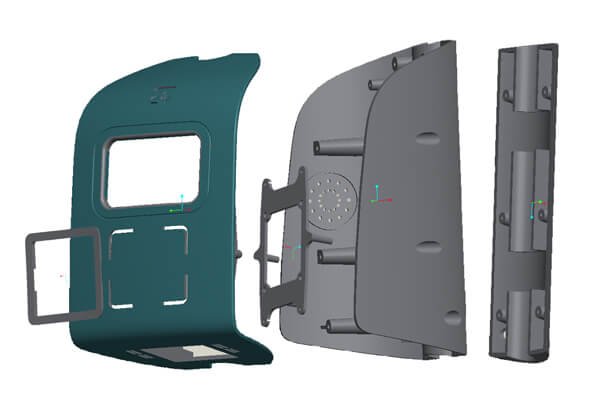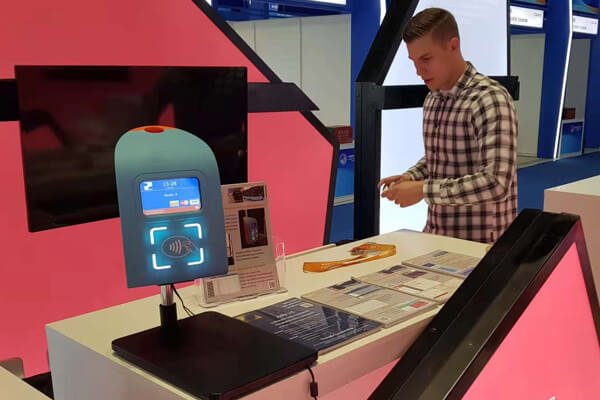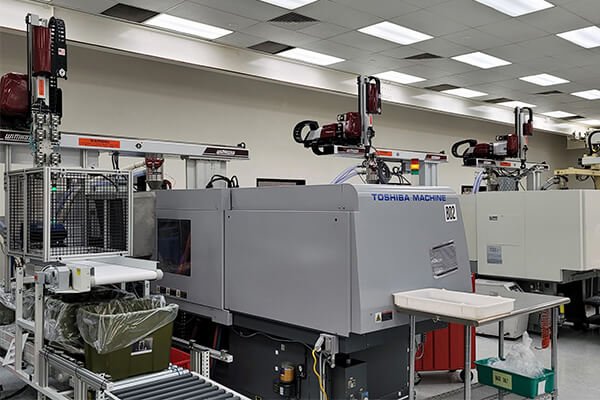Plastic injection molding services have become a cornerstone of modern manufacturing, enabling the mass production of diverse plastic products with precision and efficiency. In this comprehensive guide, we will delve into the fundamentals of plastic injection molding, explore the industries and entities that benefit from injection molding services, compare vertical and horizontal injection molding methods, assess the cost considerations associated with injection molding services, and provide insights into selecting an excellent injection molding supplier. Whether you are a product designer, engineer, or industry professional, this guide aims to provide a detailed overview of plastic injection molding services and the factors to consider when choosing a supplier.
What is Plastic Injection Molding?
Plastic injection molding is a manufacturing process that involves injecting molten plastic material into a mold cavity, allowing it to cool and solidify to form the desired product. This versatile process is widely used for the production of intricate and complex plastic parts, ranging from small components to large items. Injection molding offers high repeatability, precision, and efficiency, making it a preferred choice for the mass production of plastic products.
Read injection molding case studies to learn more.

Who Needs Injection Molding Services?
Injection molding services cater to a diverse range of industries and entities, each with unique manufacturing requirements. The following entities often benefit from plastic injection molding services:

Product Designers:
Product designers leverage injection molding services to transform their concepts and designs into tangible plastic products. The ability to replicate intricate details and achieve high precision makes injection molding an ideal choice for prototyping and mass production.
Automotive Industry:
The automotive industry extensively relies on injection molding for manufacturing various components, including interior parts, exterior trims, dashboard elements, and functional components. Injection molding allows for cost-effective production of high-quality, durable automotive parts.
Consumer Electronics Manufacturers:
Manufacturers of consumer electronics, such as smartphones, tablets, and electronic housings, benefit from injection molding services. The process enables the production of precise and aesthetically pleasing casings and components for electronic devices.
Medical Device Manufacturers:
The medical industry utilizes injection molding for the production of medical devices, equipment housings, and components. Injection molding ensures the production of sterile and high-precision medical components critical for patient care.
Packaging Industry:
Injection molding is widely employed in the packaging industry for the production of plastic containers, caps, and closures. The process offers cost-effective solutions for manufacturing packaging materials with specific shapes and functionalities.
Toy Manufacturers:
The toy industry benefits from injection molding services to produce a wide range of plastic toys with intricate designs. The efficiency of injection molding allows for the cost-effective production of toys in various shapes and sizes.
Appliance Manufacturers:
Manufacturers of household appliances, such as washing machines, refrigerators, and kitchen appliances, utilize injection molding for producing durable and precise plastic components.
Aerospace Industry:
The aerospace sector employs injection molding for manufacturing lightweight and high-strength plastic components used in aircraft interiors, instrumentation, and other applications.
Vertical Injection Molding vs. Horizontal Injection Molding
Injection molding machines come in two main configurations: vertical and horizontal. Each configuration has its advantages and is suitable for specific applications.
Vertical Injection Molding:
Orientation: In a vertical injection molding machine, the mold is positioned vertically.
Clamping Force: Generally used for low to medium clamping force requirements.
Tooling Access: Easier access to tooling and molds for setup and maintenance.
Suitable for Insert Molding: Well-suited for insert molding applications where components are inserted into the mold.
Floor Space: Takes up less floor space, making it suitable for compact manufacturing environments.
Vertical Injection Molding Applications:
Vertical injection molding machines have distinct advantages, especially when it comes to insert molding and overmolding. The vertical orientation of the mold opens up possibilities for specific applications, and here are some common product manufacturing applications:
Overmolded Electronics Components:
Vertical injection molding is well-suited for overmolding electronic components. This includes encapsulating PCB assembly, sensors, and connectors with a protective layer of plastic to enhance durability and provide insulation.
Insert Molding for Automotive Parts:
In the automotive industry, vertical injection molding is often used for insert molding applications. This involves molding plastic around pre-inserted components such as metal fasteners, creating integrated and sturdy automotive parts.
Medical Device Components:
The medical industry benefits from vertical injection molding for manufacturing various components of medical devices. This includes producing parts for surgical instruments, diagnostic equipment, and other medical tools.
Cable Overmolding:
Vertical injection molding is ideal for overmolding cables and wires. This process enhances the durability and strain relief of cables used in various applications, including consumer electronics and industrial equipment.
Customized Knobs and Handles:
Vertical injection molding allows for the efficient production of customized knobs and handles used in appliances, machinery, and consumer products. The process enables intricate designs and a range of material choices.
Rubber-to-Metal Bonding:
Certain applications require rubber-to-metal bonding, and vertical injection molding is well-suited for this process. It allows for the molding of rubber components onto metal substrates, creating products with enhanced properties.
Horizontal Injection Molding:
Orientation: In a horizontal injection molding machine, the mold is positioned horizontally.
Clamping Force: Suitable for high clamping force requirements.
Tooling Access: Tooling access may be more challenging compared to vertical machines.
Suitable for Large Parts: Well-suited for molding large and complex parts.
Automation Compatibility: Easier integration with automated systems for high-volume production.
Horizontal Injection Molding Applications:
Horizontal injection molding machines are widely utilized for a broad range of applications, and their versatility makes them suitable for various industries. Here are common product manufacturing applications for horizontal injection molding:
Consumer Electronics Housings:
Horizontal injection molding is commonly used for producing plastic housings and enclosures for consumer electronics such as smartphones, laptops, and audio devices. The process ensures precision and consistency in manufacturing these components.
Automotive Interior Components:
Horizontal injection molding is employed for manufacturing a variety of automotive interior components, including dashboard panels, interior trims, and other plastic parts that contribute to the aesthetics and functionality of the vehicle.
Packaging Containers and Caps:
The packaging industry extensively relies on horizontal injection molding for producing plastic containers, caps, and closures. This includes items such as bottles, jars, and lids used in the food and beverage, pharmaceutical, and cosmetic industries.
Household Appliance Parts:
Parts for household appliances, such as washing machine components, refrigerator shelves, and dishwasher parts, are often manufactured using horizontal injection molding. The process ensures the production of durable and precise components.
Industrial Equipment Components:
Horizontal injection molding is suitable for manufacturing components used in various industrial equipment. This includes parts for machinery, tools, and equipment used in manufacturing and other industrial applications.
Large Plastic Components:
The horizontal orientation of the mold in this process makes it well-suited for molding large plastic components. This includes items such as large panels, covers, and structural components used in different industries.
Are Injection Molding Services Expensive?
The cost of injection molding services can vary based on several factors. While injection molding is known for its cost-effectiveness in mass production, the following factors influence the overall cost:
Material Costs:
The type of plastic material used in the injection molding process contributes to the overall cost. Specialty materials or high-performance plastics may incur higher costs compared to standard materials.
Tooling Costs:
The cost of manufacturing molds, including design, machining, and tooling, is a significant factor. Complex molds with intricate designs may result in higher tooling costs.
Production Volume:
Injection molding is cost-effective for large production volumes due to economies of scale. Higher production volumes generally result in lower per-unit costs.
Part Complexity:
The complexity of the part design influences the injection molding cycle time and, consequently, the overall production cost. Intricate designs or features may require additional processing steps.
Tolerance and Precision Requirements:
Parts with tight tolerances and high precision may require more advanced tooling and precision machining, impacting the overall cost.
Surface Finish Requirements:
Parts with specific surface finish requirements, such as polished or textured finishes, may involve additional processing steps and labor, contributing to increased costs.
Secondary Operations:
Additional secondary operations, such as assembly, printing, or post-molding treatments, can contribute to the overall cost.
Tooling and Equipment:
The use of advanced tooling and equipment, such as high-speed injection molding machines, can impact costs. However, these investments often lead to enhanced efficiency and production speed.
Lead Time and Urgency:
Urgency in delivering the molded parts within a shorter lead time may involve additional costs. Expedited production processes or dedicated resources for rush orders may contribute to higher expenses.
How to Choose an Excellent Injection Molding Supplier?
Choosing the right plastic moulding china supplier is essential for the success of your manufacturing projects. Here are key considerations to guide you in selecting an excellent injection molding supplier:

Experience and Expertise:
Look for a supplier with a proven track record and extensive experience in injection molding. Consider their expertise in working with diverse materials and serving various industries.
Technology and Capabilities:
Assess the supplier’s technological capabilities, including the types of injection molding machines used, automation capabilities, and adherence to industry standards. A supplier with modern equipment can deliver high-quality results.
Material Knowledge:
A reputable supplier should possess in-depth knowledge of various plastic materials and their properties. This expertise ensures the selection of materials that align with the specific requirements of your molding project.
Quality Assurance Practices:
Inquire about the supplier’s quality assurance practices, including inspection processes, testing protocols, and certifications. A commitment to quality ensures the production of reliable and accurate molded parts.
Customization Capabilities:
Choose a supplier with the ability to handle custom injection molding projects. Customization capabilities are crucial for achieving unique designs, complex geometries, and meeting specific material requirements.
Cost Transparency:
A transparent and detailed cost structure is crucial for assessing the overall investment. A reputable supplier should provide clear pricing details, including material costs, tooling costs, and any additional charges.
Communication and Collaboration:
Effective communication and collaboration are key elements of a successful partnership. Choose a supplier who values clear communication, listens to your requirements, and collaborates closely throughout the injection molding process.
Lead Time and Delivery Commitments:
Evaluate the supplier’s ability to meet deadlines and delivery commitments. Timely delivery is crucial to ensuring that your molded parts are available when needed.
Capacity and Scalability:
Consider the supplier’s production capacity and scalability. A supplier with the ability to handle both small and large production runs can adapt to your project requirements.
Conclusion:
Plastic injection molding services represent a transformative force in manufacturing, enabling the efficient and cost-effective production of a wide range of plastic products. Whether you are a product designer, an engineer, or a decision-maker in the manufacturing industry, understanding the nuances of injection molding is crucial for making informed decisions.












